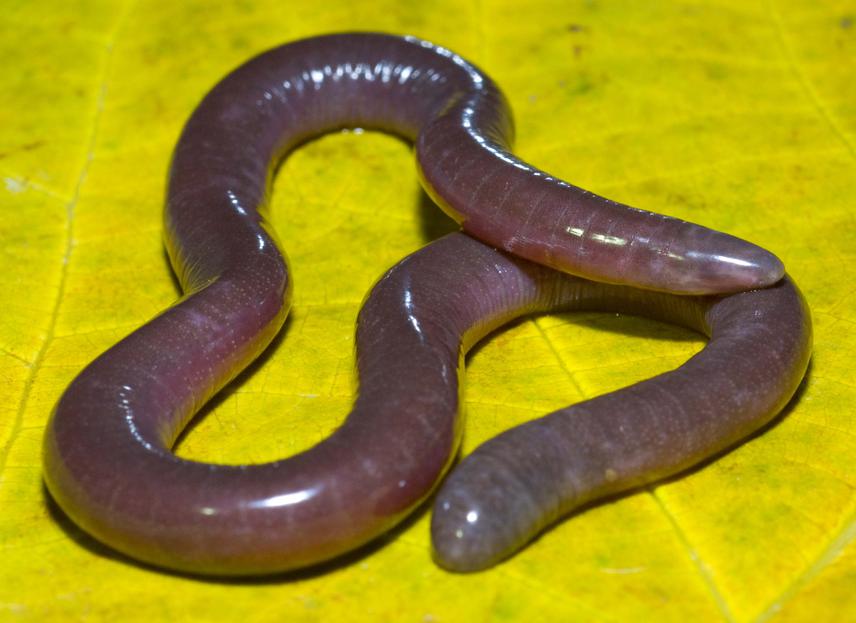Rachunliu G. Kamei
Caecilians are feared as fatally venomous ‘snakes’. Knowledge dispels fears - this project aims to create awareness through community education for a positive human-caecilians co-occurrence, primarily through grassroots conservation.

Caecilians (legless amphibians) have intrigued biologists for more than three centuries but they remain the world’s least studied vertebrate group. North East India (NEI) spreading across ca. 26,000 km2 comprises of seven contiguous states and Sikkim. NEI is a recognized biological hotspot, but its caecilian fauna remained almost completely neglected until recently (2007). This work is a follow-on from my previous taxonomic and systematic PhD research on NEI’s caecilian fauna. During my previous field surveys, I observed that locals feared caecilians due to a widespread misconception - that they are fatally venomous, leading to their frequent intentional killing, which posed potential conservation threats to local caecilian populations. At the same time, I experienced that people were keen to know about caecilians - how/why they differ from snakes / eels / (earth) worms, why they need conservation etc., but time was a constraint.
This work is dedicated to mass education catering to varied audiences, from the largely non-literate tribal communities in villages (farming and hunting community) to the educated community (schools, colleges, select research and government institutions). This will be done through popular, interactive visual presentations, distributing didactic materials, field demonstrations. While accompanying me for soil-digging activities, select tribal communities will be given demonstrations on how to identify caecilians to the species level, how to differentiate them from earth (worms) / snakes / eels etc., their life history, and how to handle and relocate accidentally encountered caecilians.
All NEI caecilian species, according to published records, are endemic, and mostly restricted to small geographic areas. Additionally, although NEI constitutes only 7.98% of India’s area, it contains nearly 25% of its forest cover, but forests are rapidly depleting due to anthropogenic pressures. Nearly 80% of NEI forests (and therefore the resources contained in it) belong to “Unclassed Forests”, under the control of tribal communities and private individuals, e.g., Nagaland and Meghalaya’s Unclassed Forests are as high as 93.6% and 88.2%, respectively. Furthermore, the general mistrust between tribal communities and government agencies frequently results in government conservation initiatives not being well received. As an independent individual and as a native tribal, I intend to have close interactions directly with the people to stimulate them to be sympathetic towards caecilians. My primary hope is that the acquired knowledge and inculcated sympathy for caecilians will spread, and be passed down to the posterity in the same way the deep-rooted myths about caecilians have passed down through generations!